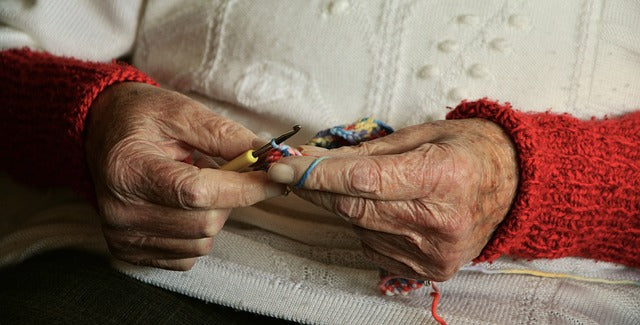
17 Health Secrets Your Skin Is Trying to Tell You
I always tell people who ask me how I came up with the gluten-free skincare, that our skin is the largest organ in our body. This means that everything you put on it and everything that gets absorbed through it, will come into the main blood stream of your body.
Skin usually ‘tells’ us what is going inside our body.
When skin issues pop up, they can be extremely frustrating. The last thing you want is to have to deal with a rash, a cluster of unidentified red bumps, or acne. But your body isn’t just ruining your day for the thrill of it—there’s usually something it’s trying to tell you, and you should always listen to what it has to say. Whether you’re suddenly dry and flaky or are noticing weird-colored patches, here are 17 health secrets your skin is trying to tell you. Article in Best Life.

If you notice yellow deposits showing up around your eyes or near your nose, you might be dealing with a condition called xanthelasma. The soft bumps under your skin are actually cholesterol-filled plaques, according to Harvard Medical School. Although they’re not cancerous, they are trying to alert you that you might have high cholesterol—something that can lead to heart issues down the line.

If you’re experiencing super-dry, flaky skin and can’t figure out why, it might be a symptom of hypothyroidism—a condition that occurs when your thyroid isn’t producing enough hormones, according to the Mayo Clinic. “Slowed metabolism reduces sweating, the skin’s natural moisturizer, so the skin may become dry and flaky and nails brittle,” according to Harvard Medical School.

While there are many symptoms that come about from diabetes, skin issues are one of the first tell-tale signs of the disease, according to the American Diabetes Association. One thing you might notice are firm yellow bumps called eruptive xanthomatosis on the backs of your arms, legs, feet, hands, and behind.

If you’re constantly breaking out on your chin and along your jawline, it might be time to cut dairy out of your diet. According to celebrity esthetician Renée Rouleau, those painful blemishes are typically due to hormonal imbalances in your body, which can be fueled by dairy.
“Most dairy cows are given growth hormones. Therefore, the consumption of milk, cheese, and yogurt influences endogenous hormones. These mimic the hormones that trigger the skin’s oil production, thus starting the acne process,” Rouleau notes on her website. “That’s why when you ingest more dairy than your body can digest, it can be excreted through hard, painful bumps under the skin on the chin and jawline.”

If you’re seeing more and more wrinkles appear on your face, it might be due to your love of all things sweet. According to the American Academy of Dermatology, diets that contain an overload of sugar commonly contribute to premature aging. So get rid of that sweet tooth ASAP before it’s too late and grab some fruit for a treat instead.

One reason you might be experiencing a flaky scalp (known as seborrheic dermatitis) is actually due to a nutritional deficiency. According to a 2015 study published in the Journal of Clinical and Investigative Dermatology, being low in zinc, vitamin B6, vitamin B3, and vitamin B2 could induce the itchy skin problem.

Whether you remember where you got them or not, bruising easily could be a sign of a vitamin C deficiency. “Vitamin C is essential for the synthesis of collagen and other compounds that affect the skin’s and blood vessel’s ability to withstand the impacts that lead to bruises,” according to Dr. Andrew Weil, an integrative medicine expert and founder of Weil Lifestyle in Phoenix, Arizona.

Varicose or spider veins—which often show up as purple or blue bulging veins on your legs—are often the result of circulatory problems, typically due to a change in your blood flow due to your age or pregnancy. The only way to get rid of them is to improve your circulation and muscle tone, according to the Mayo Clinic.

Melasma is a skin problem—more common in women than men—that causes brown patches to show up on your face. It’s typically triggered by a change in your hormones, whether that’s from pregnancy, birth control pills, or a hormone replacement medicine, according to the American Academy of Dermatology.

Angular cheilitis is inflammation of the corners of your mouth, which leads to cracks and crusting. At first, it might just seem like they’re there because your skin is dry, but they typically form because of nutritional deficiencies—particularly not having enough iron or B vitamins, according to a 2007 study published in the journal Canadian Family Physician.

If you’ve noticed bumps on the top of your thighs or the backs of your arms, you might just need a little more vitamin A in your life, writes Rouleau. You’ll find vitamin A in carrots, sweet potatoes, squash, cantaloupe, spinach, and kale.

Experiencing red scaly patches on your skin could be a sign of psoriasis, a chronic immune-mediated disease that’s often triggered by stress or colds. That’s not all, though: “Psoriasis can be associated with other health conditions too, such as diabetes, heart disease, abdominal obesity, and depression,” explains Dr. Kellie Reed, a board-certified dermatologist at Sanova Dermatology in Austin, Texas.

There are a handful of reasons you might be experiencing swelling or puffiness under your eyes, but one of the primary culprits has an easy fix: stop eating so much salt. By cutting down on sodium, you can get rid of the fluid retention causing the problem, according to the Mayo Clinic.

Everyone gets strange marks on their skin once in a while. But if you’ve happened to notice one in particular is changing in color, size, or shape, researchers from the University of Utah recommend seeing a doctor stat. It could be a sign of skin cancer, and the earlier you get it checked out, the better.

One of the most well-known signs of liver disease is the yellowing of the skin and the eyes due to blood containing too much bilirubin, a compound that’s found in liver bile. See a doctor immediately if you notice any yellowing of your skin, since it can either be very serious or remedied with lifestyle changes, according to the Mayo Clinic.

Foot rashes are common—especially if you tend to walk around in your yard barefoot or use the shower at your gym. If that rash doesn’t go away, though, and you’re also experiencing joint pain and a fever, it could be a sign of hepatitis C, a liver infection caused by a virus, according to the American Academy of Dermatology.

If it always looks like you’re blushing, rosacea might be the issue. According to the Cleveland Clinic, this skin condition typically makes it look like there’s a pink tint across your nose, chin, cheeks, and forehead. Just don’t wait to get it treated: If you do, it could get worse and make parts of your face appear to be swollen. And for more ways to have picture-perfect skin, make sure you avoid the 20 Face-Washing Habits That Are Aging Your Skin.


